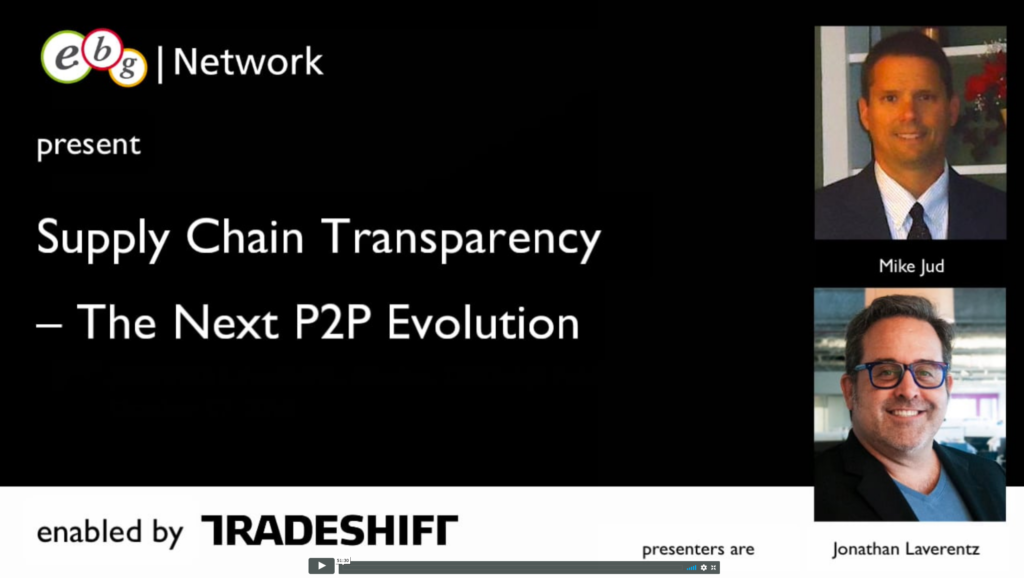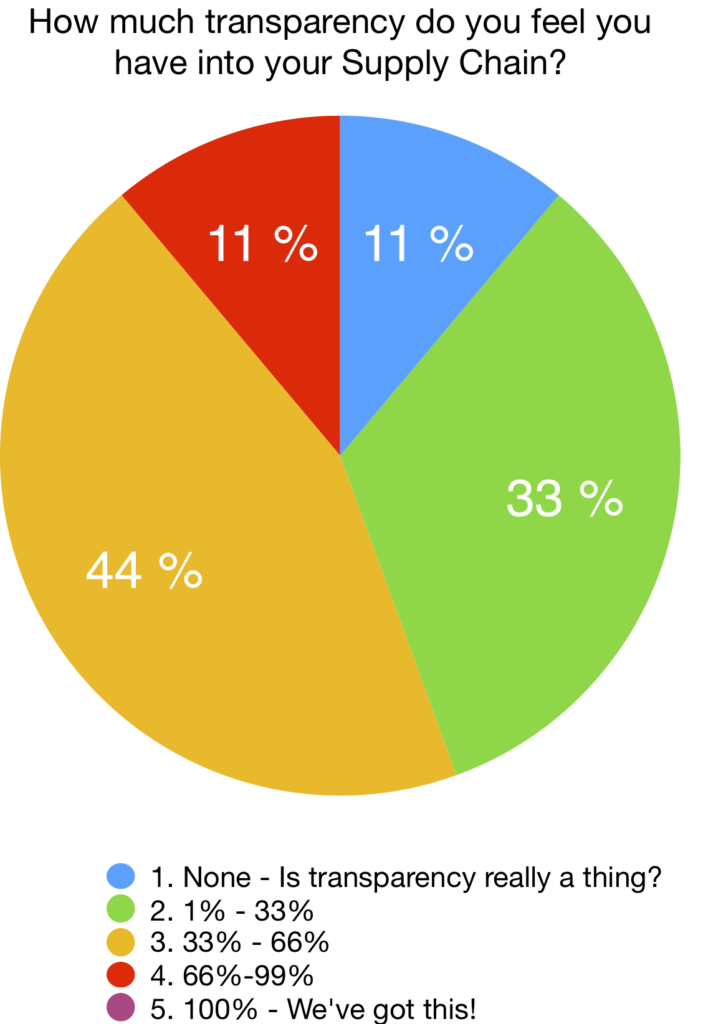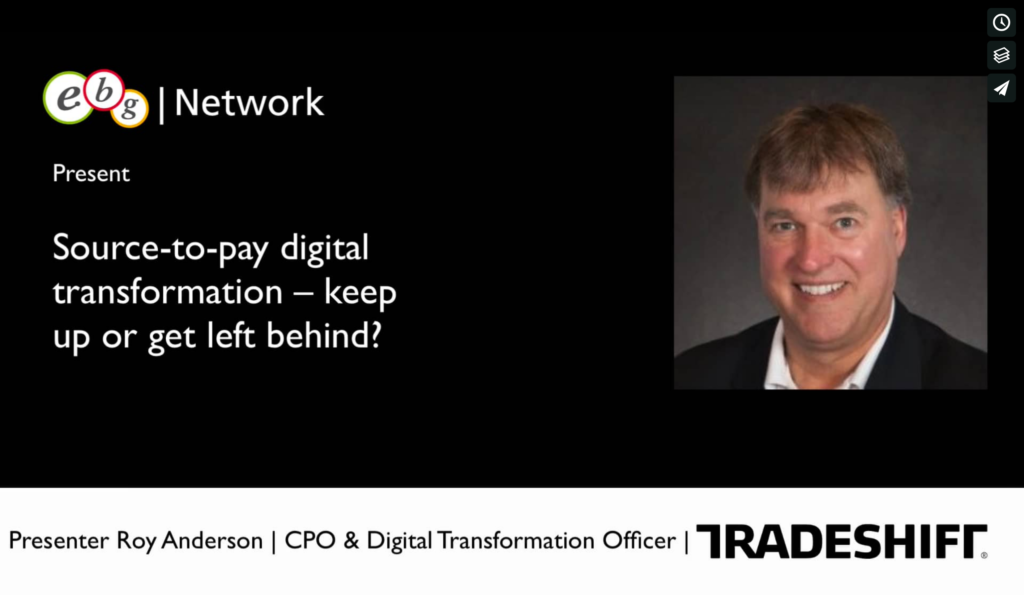
Supply Chain Transparency…the Next P2P Evolution – a webinar hosted by EBG | Network enabled by Tradeshift recently and below you can view it all over again. Mike Jud and Jonathan Laverentz shared their different “up” and “down” stream experiences from years of working with different type organizations and technology.
The first reflection being that seeing supply chain and P2P (procure to pay) in the same sentence doesn’t happen too often. Not that supply chain processes doesn’t indeed go through every step of identifying a need, sourcing, possibly designing a contract, communicating the contract, enabling purchasing of goods and services, receiving of goods and services and paying for the goods and services. No more because the discourse has been cutting the process in pieces and due to have system providers traditionally have been created – from the upstream sourcing and procurement perspective on one hand or the downstream accounts payable perspective on the other hand – the very clear end to end flow has until now not also been defined as supply chain.
Are you making the horse run faster or…?
The two things EBG | Network appreciate with doing webinars are being inspired and getting concrete ideas.
- Are you making the horse run faster or are you transforming how you do business?
- Are you seeking to become more electronic as in turning what was paper into electronic documents – or are you seeking to go digital as in using networked data and adapting to changes beyond your traditional buyer and seller perspective?
The above two questions open up different perspectives on P2P and they are great questions to be asked. Is pushing what was once manual and paper based faster a goal to strive for? It taking 1 day instead of 20 for an invoice to reach accounts payable or a payment not being delayed but actually paid on time.
On demand recording
Take a look at the on demand session 
How transparent is your supply chain
The one poll question to share is asking the live attendees how transparent they perceive their supply chain is.

And of course this is a very valid question to ask. Consider the “horse” question and we can understand why. Noted that a few respondents probably joked with us but we are ok with that!
If you can only tap into up to 66% of your entire supply chain – what possibilities are lost?
Source to pay digital transformation
Earlier this year, EBG hosted a webinar also enabled by Tradeshift where Roy Anderson, CPO at Tradeshift and passionate about changing the perception of what supply chain management is and can be. Below by clicking the image or >here (opens in a new tab)”>>>here you can re-view that session too. A key aspect from that session for EBG was calculating how much time procurement spend on ad hoc and administrative tasks versus strategic and forward looking tasks.

Summary
Given that many organizations are still working in silos with silo KPIs it is no wonder we ask the horse to run faster. But. There is a debate what is to become with today’s working force as more and more of doing business is automated. Connecting the dots within an extended supply chain network – from procurement to accounts payable to treasury – is one such thing that can be done and need to be done and people will have to play a big role in making that happen.
About Tradeshift
Founded in 2010, Tradeshift is the world’s largest business commerce platform that connects buyers and sellers. Tradeshift connects over 1.5 million companies across 190 countries, processes over half a trillion USD in transaction value yearly, and has a marketplace containing 28 million SKUs. It offers solutions for procure to pay, supplier engagement and financial services, and enables companies and partners to build custom or commercial apps on its business commerce platform.
Tradeshift is headquartered in San Francisco, with offices in Copenhagen, New York, London, Paris, Suzhou, Chongqing, Tokyo, Munich, Frankfurt, Sydney, Bucharest, Oslo, and Stockholm. tradeshift.com